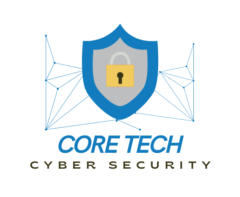Selecting the right cybersecurity tools is crucial for protecting your organization from a growing array of cyber threats. With countless options available, choosing the best tools can be overwhelming. This guide will help you navigate the selection process and ensure you invest in tools that best fit your needs.
1. Assess Your Security Needs
Before choosing any tools, it’s essential to assess your organization’s specific security needs. Consider factors such as:
- Type of data: What type of sensitive data do you handle?
- Regulatory requirements: Are there industry-specific regulations you need to comply with?
- Existing infrastructure: What current security measures and technologies are in place?
Understanding these needs will help you identify the gaps in your security and choose tools that address them effectively.
2. Evaluate Tool Capabilities
Different cybersecurity tools offer various functionalities. Here’s a breakdown of key capabilities to look for:
- Threat Detection and Response: Tools that offer real-time monitoring and alerting of potential threats.
- Vulnerability Management: Solutions for identifying and managing security vulnerabilities.
- Incident Management: Tools that help in tracking, managing, and resolving security incidents.
- Compliance and Reporting: Features that assist with compliance requirements and provide detailed reporting.
Ensure that the tools you choose align with your specific security requirements and offer comprehensive capabilities.
3. Consider Integration and Compatibility
Cybersecurity tools need to work seamlessly with your existing systems and software. When evaluating tools, consider:
- Integration with existing tools: Ensure compatibility with your current security solutions and infrastructure.
- Ease of deployment: Choose tools that are straightforward to deploy and integrate without causing major disruptions.
- API and integration capabilities: Look for tools that offer robust API support for easier integration with other systems.
Choosing tools that integrate well with your existing environment can help streamline operations and improve overall efficiency.
4. Assess Usability and Support
Usability and support are critical factors in selecting cybersecurity tools. Consider the following:
- User interface: Choose tools with an intuitive user interface that your team can easily navigate.
- Training and documentation: Ensure that comprehensive training resources and documentation are available.
- Vendor support: Evaluate the level of support provided by the vendor, including response times and available support channels.
Good usability and strong support can significantly impact the effectiveness of the tools and their adoption within your organization.
5. Evaluate Cost and Return on Investment (ROI)
While cost shouldn’t be the only factor in your decision, it’s important to consider the financial implications. Look at:
- Pricing models: Understand the pricing structure of the tools, including any additional costs for licensing, support, and updates.
- Total Cost of Ownership (TCO): Consider both initial costs and ongoing expenses.
- ROI: Evaluate the potential return on investment by considering how the tool can enhance your security posture and reduce risk.
Choosing tools that offer a good balance of cost and value can help you maximize your investment.
6. Read Reviews and Seek Recommendations
Before making a final decision, gather insights from other users:
- Customer reviews: Read reviews and testimonials to gauge user satisfaction and performance.
- Case studies: Look for case studies and success stories to understand how the tool has performed in similar environments.
- Expert opinions: Seek recommendations from cybersecurity experts and industry peers.
Reviews and recommendations can provide valuable insights into the tool’s effectiveness and reliability.
Conclusion
Choosing the best cybersecurity tools involves a thorough evaluation of your needs, tool capabilities, integration requirements, usability, cost, and feedback from other users. By carefully considering these factors, you can select tools that effectively protect your organization from cyber threats and enhance your overall security posture.
